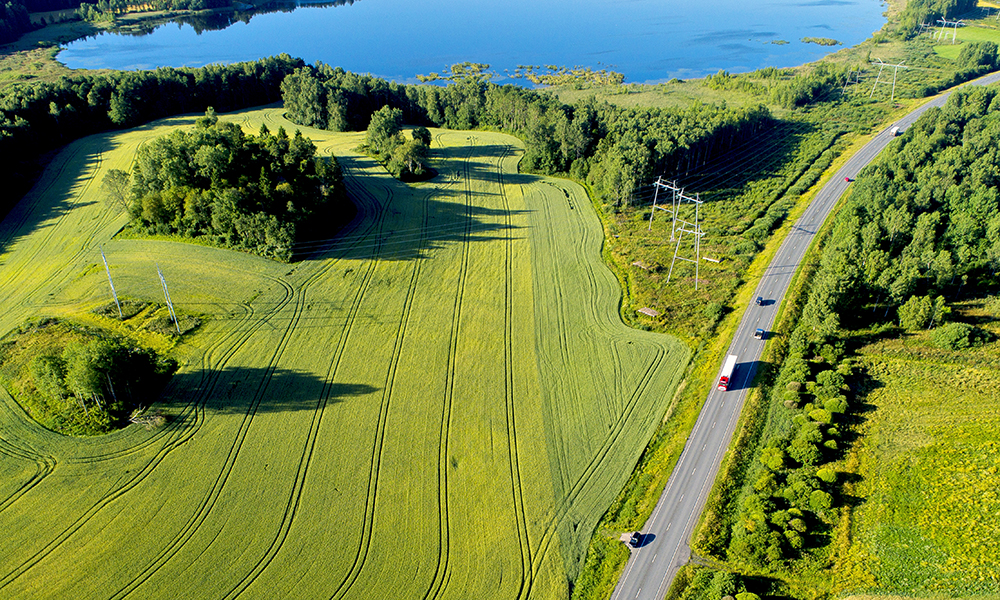Experts assess the landscape impacts as part of the Environmental Impact Assessment (EIA). The report influences more detailed route planning and possibly the placement of tower sites.
“For Fingrid, the EIA required by law is a good tool for finding the transmission line route that is most suitable for people and nature. In addition to nationally or locally important and valuable landscapes, the EIA helps us to obtain information concerning views that private persons perceive as important, such as the landscape visible from their own yard. This is useful during further planning,” says Fingrid’s Development Manager Satu Vuorikoski.
The landscape is examined by means of a pair of concepts: local and broad landscape. The visibility of a transmission line is examined in three zones, ranging from the immediate environment of the tower to as far as five kilometres away. Conductors are so thin that they blend in easily with the terrain but a tower can be seen from a long distance.
A landscape architect visits the site
Landscape Architect Riikka Ger has been involved in many EIA processes. Her latest project was the EIA for the Pyhänselkä–Nuojua transmission line project.
“We review the valuable sites on the route with the EIA team of experts. We also examine, for example, extensive field areas or waterway crossings, because those are places where the pylons are visible at a distance. We prefer to make field visits to these sites between May and October, when we take photos and otherwise document the areas. We also use aerial photos and create conceptual images to assist in our work,” explains Ger.
After the field-visit, the landscape architect analyses the landscape values.
“I evaluate different alternatives for the transmission line route and sometimes I provide recommendations for placing the pylons in order to disturb the landscape as little as possible. Our EIA team compiles the analyses of different experts, and then we discuss the most suitable routes in terms of the overall situation,” states Ger.
A conceptual image makes the change easier to understand


Fingrid presents the conceptual images to city representatives, land owners and other stakeholders in order to illustrate the impacts of the transmission line.
“We make conceptual images for valuable sites that are identified in conjunction with the landscape analysis. We place a photo of the site without a transmission line beside a conceptual image showing the line. Often, the first reaction is that there is no significant difference in the images, especially in the broad landscape,” says Project Manager Mika Penttilä.
The visibility of the tower is examined during different seasons. A galvanised steel tower with guy wires is the most common choice.
“Painting towers is challenging in terms of transmission line maintenance, and in Finland this is mainly done for purposes of identifying flight obstacles. Sculptural landscape towers are often impressive landmarks. These are collaborative projects involving different parties that may be for example implemented close to an important traffic route,” explains Vuorikoski.
Land owners and other stakeholders are asked to provide specific comments during the EIA phase.
“Concrete feedback is easier to take into account in transmission line and tower placement. When someone tells us that this spot is an important view, we always try to take it into consideration within the scope of the technical boundary conditions for transmission line construction. The owners can still comment on the proposal in the further planning phase,” says Vuorikoski. •







